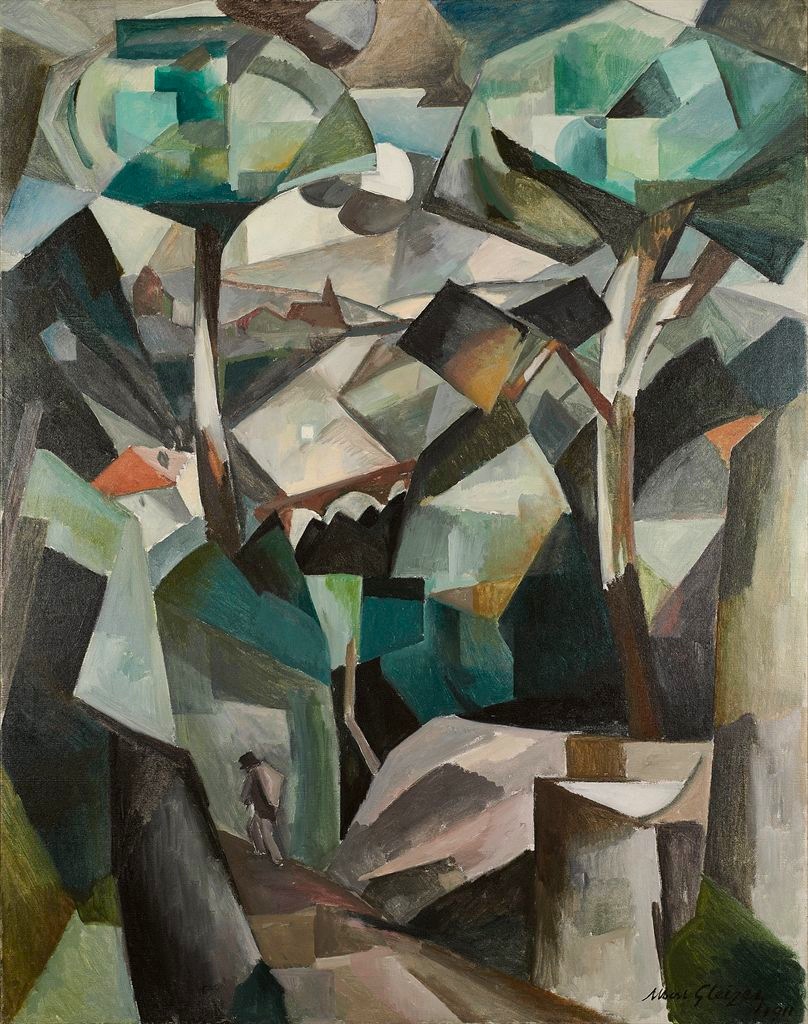|
Passy, Bridges Of Paris (Gleizes)
''Passy, Bridges of Paris'', also called ''Les ponts de Paris (Passy)'', or ''Paysage à Passy'', is a painting created in 1912 by the French artist, theorist and writer Albert Gleizes. The work was exhibited at the Salon de la Société Normande de Peinture Moderne, Rouen, 1912 (titled ''Passy''); the Salon de la Section d'Or, Galerie La Boétie, Paris, 1912 (titled ''Passy''); Manes Moderni Umeni, Vystava, Prague, 1914 (titled ''Paysage à Passy''); and Galerie Der Sturm, Berlin, July, 1914. ''Passy'' was one of a small group of works chosen to be reproduced in the seminal treatise '' Du "Cubisme"'', written by Albert Gleizes and Jean Metzinger in 1912 and published by Eugène Figuière the same year. Executed in a highly personal Cubist style with multiple viewpoints and planar faceting, this is one of a number of paintings from 1912-13 involving the theme of the bridge in an urban landscape. In opposition to classical perspective as a mode of representation, Gleizes empl ... [...More Info...] [...Related Items...] OR: [Wikipedia] [Google] [Baidu] |
Albert Gleizes
Albert Gleizes (; 8 December 1881 – 23 June 1953) was a French artist, theoretician, philosopher, a self-proclaimed founder of Cubism and an influence on the School of Paris. Albert Gleizes and Jean Metzinger wrote the first major treatise on Cubism, ''Du "Cubisme"'', 1912. Gleizes was a founding member of the Section d'Or group of artists. He was also a member of ''Der Sturm'', and his many theoretical writings were originally most appreciated in Germany, where especially at the Bauhaus his ideas were given thoughtful consideration. Gleizes spent four crucial years in New York, and played an important role in making America aware of modern art. He was a member of the Society of Independent Artists, founder of the Ernest-Renan Association, and both a founder and participant in the Abbaye de Créteil. Gleizes exhibited regularly at Léonce Rosenberg's ''Galerie de l’Effort Moderne'' in Paris; he was also a founder, organizer and director of Abstraction-Création. From the mid-1 ... [...More Info...] [...Related Items...] OR: [Wikipedia] [Google] [Baidu] |
Paul Fort
Jules-Jean-Paul Fort (1 February 1872 – 20 April 1960) was a French poet associated with the Symbolist movement. At the age of 18, reacting against the Naturalistic theatre, Fort founded the Théâtre d'Art (1890–93). He also founded and edited the literary reviews ''Livre d'Art'' with Alfred Jarry and ''Vers et Prose'' (1905–14) with poet Guillaume Apollinaire, which published the work of Paul Valéry and other important Symbolist writers. Fort is notable for his enormous volume of poetry, having published more than thirty volumes of ballads and, according to Amy Lowell, for creating the polyphonic prose form in his 'Ballades francaises'. Life and career Paul Fort was born in Reims, Marne ''département'', France in 1872. His father, an insurance agent, moved the family to Paris in 1878. While attending secondary school at the Lycée Louis-le-Grand, he became a noted part of the artistic community of Montparnasse. He sought out the company of avant-garde artists and befrie ... [...More Info...] [...Related Items...] OR: [Wikipedia] [Google] [Baidu] |
Panorama Of Paris, View From The Trocadero Towards Passy
A panorama (formed from Greek language, Greek πᾶν "all" + ὅραμα "view") is any Obtuse angle, wide-angle view or representation of a physical space, whether in painting, drawing, photography, film, seismic images, or 3D modeling. The word was originally coined in the 18th century by the English Irish people, (Irish descent) painter Robert Barker (painter), Robert Barker to describe his panoramic paintings of Edinburgh and London. The motion-picture term Panning (camera), ''panning'' is derived from ''panorama''. A panoramic view is also purposed for multimedia, cross-scale applications to an outline overview (from a distance) along and across repositories. This so-called "cognitive panorama" is a panoramic view over, and a combination of, cognitive spaces used to capture the larger scale. History The device of the panorama existed in painting, particularly in murals, as early as 20 A.D., in those found in Pompeii, as a means of generating an immersive "Panopticism, ... [...More Info...] [...Related Items...] OR: [Wikipedia] [Google] [Baidu] |


